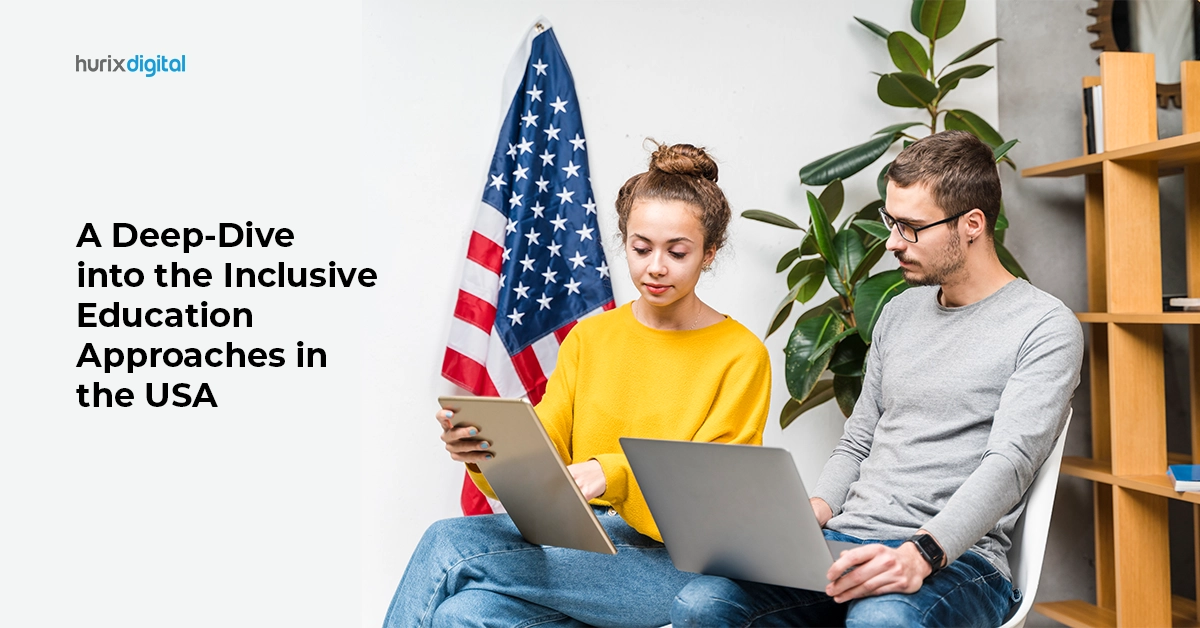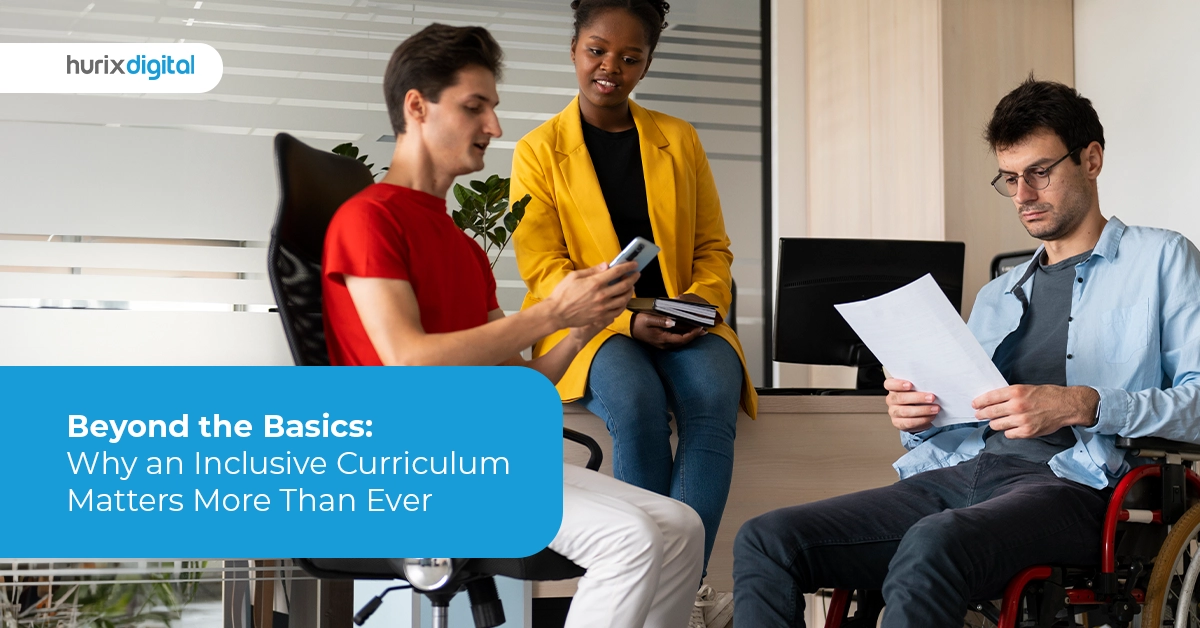Summary
This article provides a brief overview of inclusive education in the USA. It explains what inclusive education is, the policies in place to ensure inclusivity, the approaches adopted, and the role played by digital learning solutions.
The limitations of traditional education approaches have excluded many learners from the system. While a lecture-style classroom education can be highly effective, unfortunately, it is not equipped to teach all learners effectively.
Hence, many students either drop out of the education system or are discouraged from pursuing subjects they could potentially excel in. This is where inclusive education can flip the narrative.
Inclusive education is the fourth sustainable development goal, which aims to provide inclusive and equitable access to quality education for all by 2030.
Countries like the USA have made great strides toward making education accessible to all learners. For instance, in the academic year 2010-11, 6.4 million students with disabilities accounted for 13% of the enrollment in public schools. This number grew to 7.3 million, making up 15% of public school enrollment in the academic year 2021-22.
Let’s understand the factors behind this spurt in inclusive education in the USA, the approaches adopted, and the role played by digital learning solutions.
Table of Contents:
- What Is Inclusive Education?
- Inclusive Education Policy in The US
- Strategies for Inclusive Education in The US
- The Conclusion
What is Inclusive Education?
Inclusive education is a learning approach where all learners, irrespective of gender, socio-economic background, and physical and intellectual limitations, have an equal opportunity to build skills and knowledge. Traditional learning methods, however, prevent millions of learners from effectively learning.
Here are some common scenarios:
- Learners with visual and hearing difficulties lack the necessary support and learning tools. Those with mobility challenges struggle to thrive in an inaccessible environment that is not wheelchair-friendly or has accessible restrooms. There may also be a lack of peer and teacher acceptance.
- Some learners have specific conditions, such as dyslexia, which prevent them from learning through reading and writing. The lack of relevant support prevents them from reaching their full potential.
- Learners with intellectual challenges are often denied education without a proper review of their abilities.
- Aspects such as gender and socio-economic discrimination may prevent learners from accessing quality education due to systemic prejudices and barriers.
- Some learners may be unable to attend certain schools due to the transferrable nature of a parent’s job.
Inclusive education solves the long-term challenge of inaccessible education for diverse learners.
Also Read: What are the Biggest Challenges of Online Education Today?
Inclusive Education Policy in the USA
In 1975, the Education for All Handicapped Children Act, also known as the Individuals with Disabilities Education Act (IDEA), was signed into law. All children, by law, were guaranteed access to relevant public education. Considered a landmark civil rights amendment, the public school system began accepting learners with disabilities.
Through consequent IDEA amendments, affirmative steps were taken to drive superior outcomes for learners with difficulties. In 1975, 1.8 million children with disabilities were excluded from attending public schools. By the academic year, over 66% of learners with disabilities attend school for 80% or more of their day.
Let’s dig deeper into the strategies for inclusive education working in the USA.
Strategies for Inclusive Education in the USA
Let’s delve into strategies along with inclusive education examples.
1. Supportive Learning Environment
The first step towards inclusive education is creating a supportive learning environment for students. The learning culture must be welcoming to students with limitations and challenges. This requires education providers to have a thorough understanding of learners from diverse backgrounds, their needs, and potential. For example, inclusive education institutes in the USA offer accessible infrastructure that allows learners using wheelchairs to navigate the premises independently.
2. A Blended Learning Approach
Today, more education providers are leveraging a blended learning approach, which combines various learning methodologies to enhance learning effectiveness. For instance, teachers in the USA supplement classroom lectures with access to high-quality on-demand online resources such as videos, audio representations, infographics, gamified learning, and interactive quizzes.
24/7 access to such resources explains fundamentals through high-impact visuals, 3D/animated visualization, and audio narratives, which cater to those with visual, hearing, and learning difficulties. The same piece of content can cater to a diverse audience of learners because it is accessible in multiple formats. A blended learning approach encourages self-learning, flexibility, and revision of educational concepts.
3. Trained Teachers and Facilitators
Educators need to receive training to fully understand the needs of diverse learners. Additionally, they must study the techniques and learning methods to bridge the gaps in current educational programs. For example, a teacher working with learners with hearing challenges should be acquainted with sign language or have a designated sign language interpreter in the classroom.
Teachers should also be provided access to on-demand learning resources that bridge learning barriers. This is where early investment in training educators can help education providers boost the learning outcomes of underserved learners.
4. Smart Usage of Technology
Even if an education provider aims to have an inclusive education policy, they must back it up by delivering high-quality, accessible education. This is where access to the right technological tools can help them back intention with delivery.
For instance, inclusive education providers in the USA are adopting AI-driven learning management systems (LMS) to run their education operations end-to-end. They leverage superior digital publishing tools to create, publish, and disseminate online learning resources to students across geographies.
These innovative digital learning solutions are instrumental in helping education providers meet their inclusive education goals.
Also Read: What will be the Impact of the New Education Policy on Higher Education Solutions?
In Conclusion
Today, inclusive education is no longer considered to be a social cause. It is a civil right guaranteed by the law. However, turning it into reality requires strategic thinking, planning, universal design interventions, and the relevant usage of technology. The importance of inclusive education is growing, and the USA has made significant strides in the right direction using technological innovation.
Whether you are an education provider or an education technology company, you can partner with technology specialists like Hurix Digital, pioneers of innovative e-learning solutions that make learning accessible. This step paves the way for greater learning effectiveness for diverse and underserved learners.
If your business is looking to build inclusive education into your education system, Hurix Digital is geared to support you in meeting all your learning management needs through a state-of-the-art Learning Management System (LMS) and digital publishing tools.
Get in touch with us to start a conversation and leverage the best LMS solutions for your small business.







